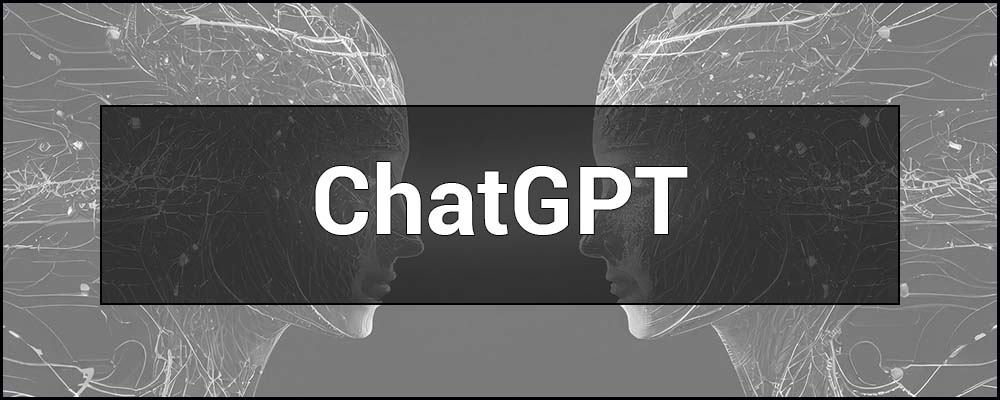ChatGPT is a state-of-the-art natural language processing model developed by OpenAI, an artificial intelligence research laboratory consisting of the forerunners in the field. It is an extension of the “Generative Pre-trained Transformer” (GPT) series of machine learning algorithms, specifically designed to generate coherent and natural-sounding human-like text. ChatGPT has gained widespread attention for its impressive text generation capabilities, which have been utilized in a variety of applications including customer service chatbots, personal assistants, language learning, and mental health support. In this article, we will provide an overview of the concept of ChatGPT, its functionalities, applications, as well as concerns surrounding its use.
What is ChatGPT — definition and meaning in simple words.
In simple words, ChatGPT is a machine learning model that can generate human-like text based on the input data it has been trained on. It is essentially a computer program that has learned to mimic human speech and can generate text that is difficult to distinguish from text written by a human.
To understand ChatGPT, it’s important to understand the concept of GPT. GPT stands for “Generative Pre-trained Transformer,” which refers to a machine learning algorithm that generates text based on input data. ChatGPT is an extension of this concept, specifically designed for generating natural language text.

How does ChatGPT work?
ChatGPT works by using a neural network architecture, which is a type of machine learning algorithm that is inspired by the structure of the human brain. The architecture of ChatGPT is designed to process input data and generate output text that is natural-sounding and coherent.
The training process for ChatGPT involves using a large corpus of text data to “teach” the model how to generate natural language text. Once the model has been trained on this data, it can be fine-tuned for specific tasks such as writing emails, creating content for blogs, or responding to customer queries.
One key feature of ChatGPT is that it is able to learn from the context of a conversation. This means that it can generate responses that are relevant and appropriate to the current topic being discussed. For example, if a user asks ChatGPT about the weather, it will be able to provide a relevant response based on the user’s location and the current weather conditions.
Examples of using ChatGPT:
- One of the main applications of ChatGPT is in the field of customer service. Many companies are now using ChatGPT for their customer service chatbots, allowing them to handle a wide range of customer queries quickly and accurately. This helps to reduce the workload on customer service staff and improve customer satisfaction.
- ChatGPT can also be used as a personal assistant to help manage tasks, appointments, and reminders. It can even provide helpful recommendations based on a user’s preferences, such as suggesting restaurants or movies to watch.
- In the field of language learning, ChatGPT can be used to help people practice their language skills by generating natural language conversations. Users can have conversations with ChatGPT and receive feedback on their grammar and vocabulary usage. This can be especially helpful for people who are learning a new language and want to practice speaking and listening skills.
- Another potential application of ChatGPT is in mental health support. It can provide personalized advice, coping mechanisms, and resources to help manage stress, anxiety, and depression. For example, a person could have a conversation with ChatGPT about their feelings and receive helpful suggestions for managing their emotions.
The Training Process of ChatGPT.
The training process of ChatGPT involves using a large dataset of text data to “teach” the model how to generate natural language text. OpenAI has released several versions of the GPT model, with each new version being trained on a larger and more diverse dataset than the previous one. The latest version of the GPT model, GPT-3, was trained on a massive dataset consisting of over 45 terabytes of text data from the internet.
The training process of ChatGPT involves fine-tuning the model for specific tasks. For example, if the goal is to use ChatGPT for customer service, the model will be trained on a dataset of customer queries and responses. Once the model has been fine-tuned, it can be deployed in a production environment, where it can generate responses to customer queries in real-time.

Criticisms and Concerns:
- Despite the many potential benefits of ChatGPT, there are also concerns surrounding its use. One major concern is the potential for bias in the input data used to train the model. If the input data used to train the model is biased towards a particular demographic group, the output generated by ChatGPT may also be biased. There have been reports of biased output generated by large language models like GPT-3 in the past, which can be harmful in real-world applications.
- Another concern is the energy consumption and carbon footprint associated with training large language models. The training process for GPT-3, for example, reportedly consumed an estimated 300,000 kWh of energy and emitted over 200 metric tons of carbon dioxide. This has led to calls for more sustainable AI development practices, such as the use of renewable energy sources and more efficient algorithms.
Conclusion.
ChatGPT is a powerful language model that has the potential to revolutionize various industries. Its applications in customer service, content creation, personal assistance, language learning, and mental health support are just the beginning. However, it’s important to be aware of the potential concerns surrounding its use and work towards developing sustainable and ethical AI practices. With responsible use and continued development, ChatGPT and other similar language models can have a positive impact on the way we interact with technology and each other.




